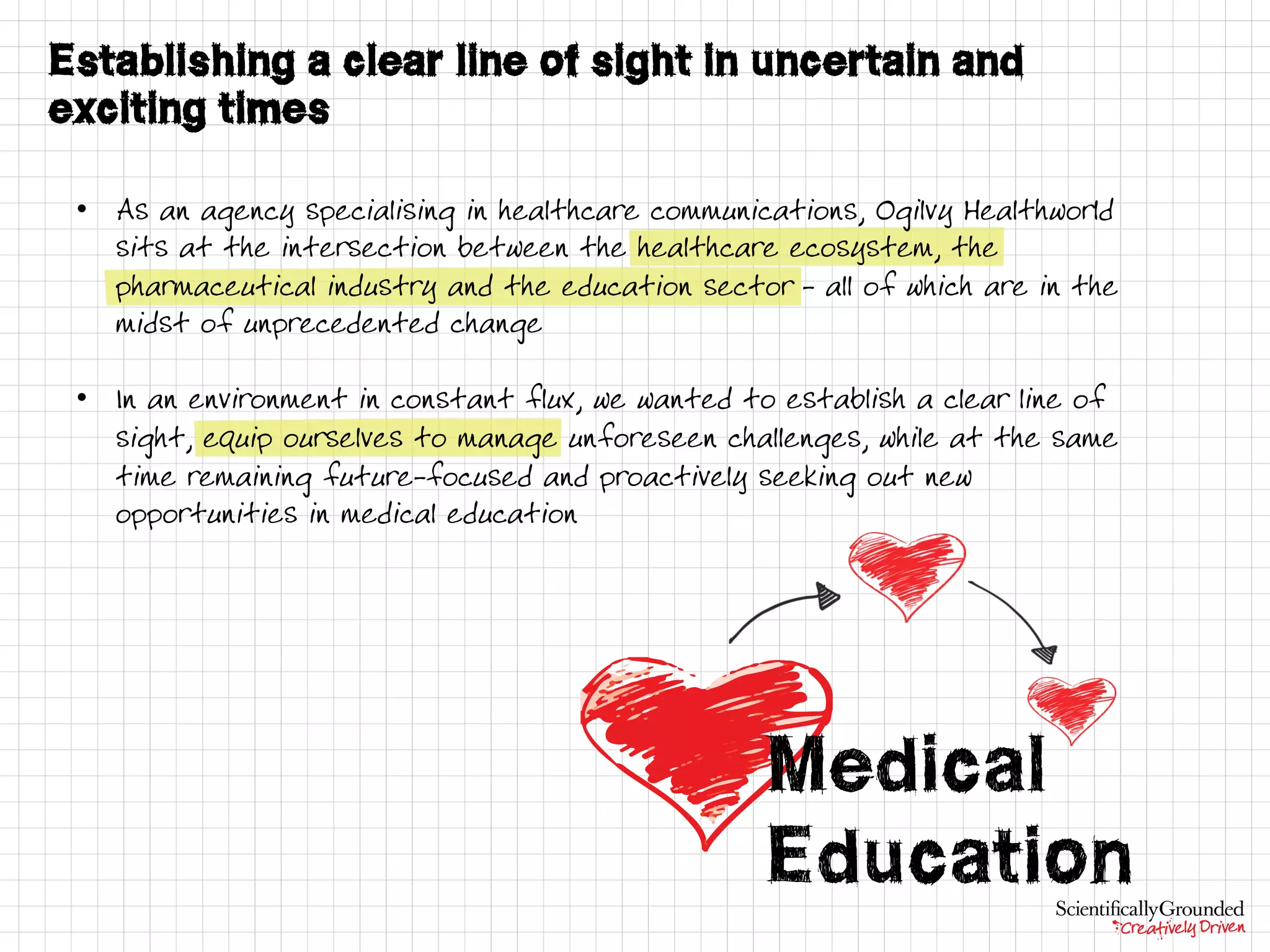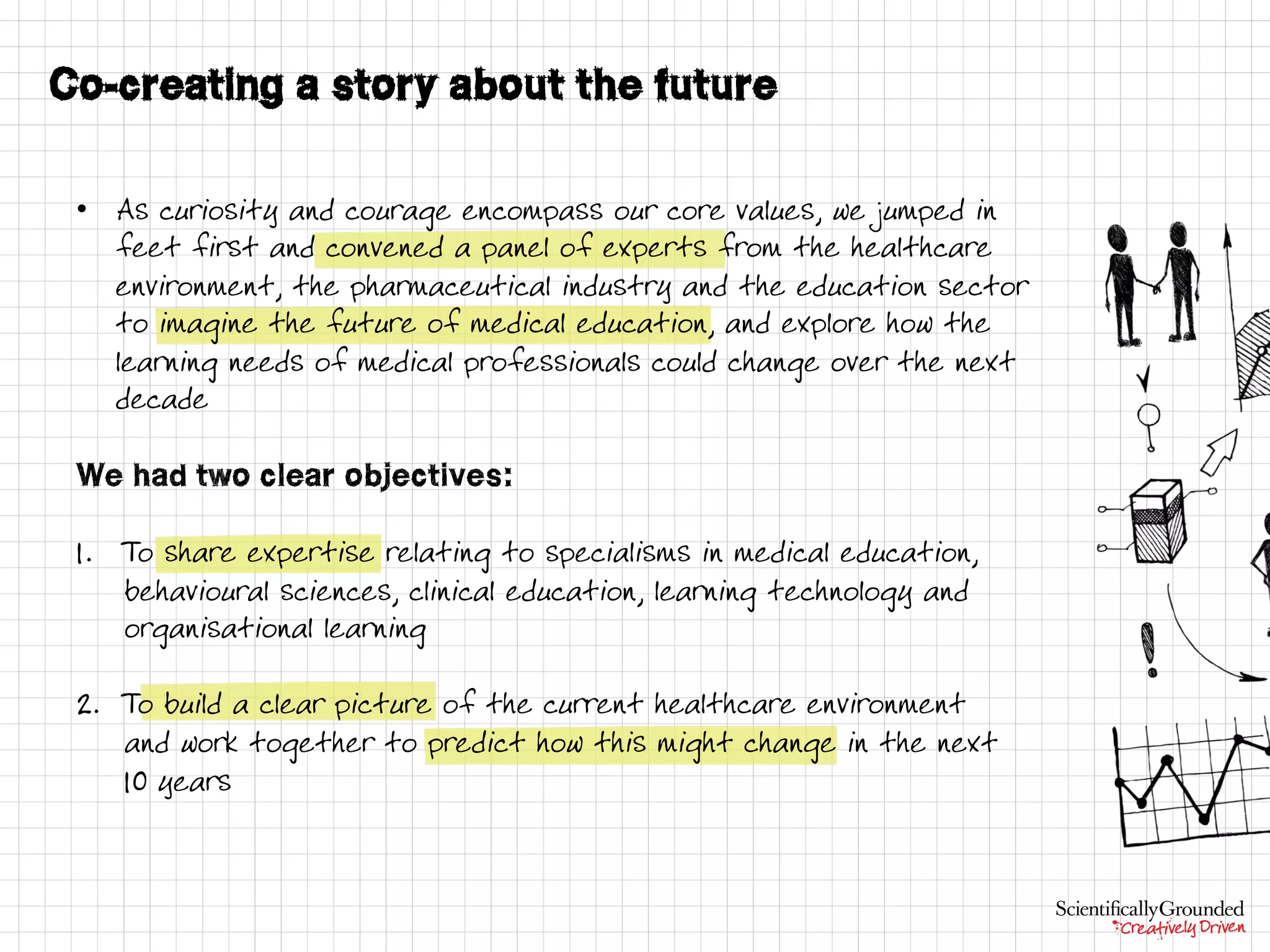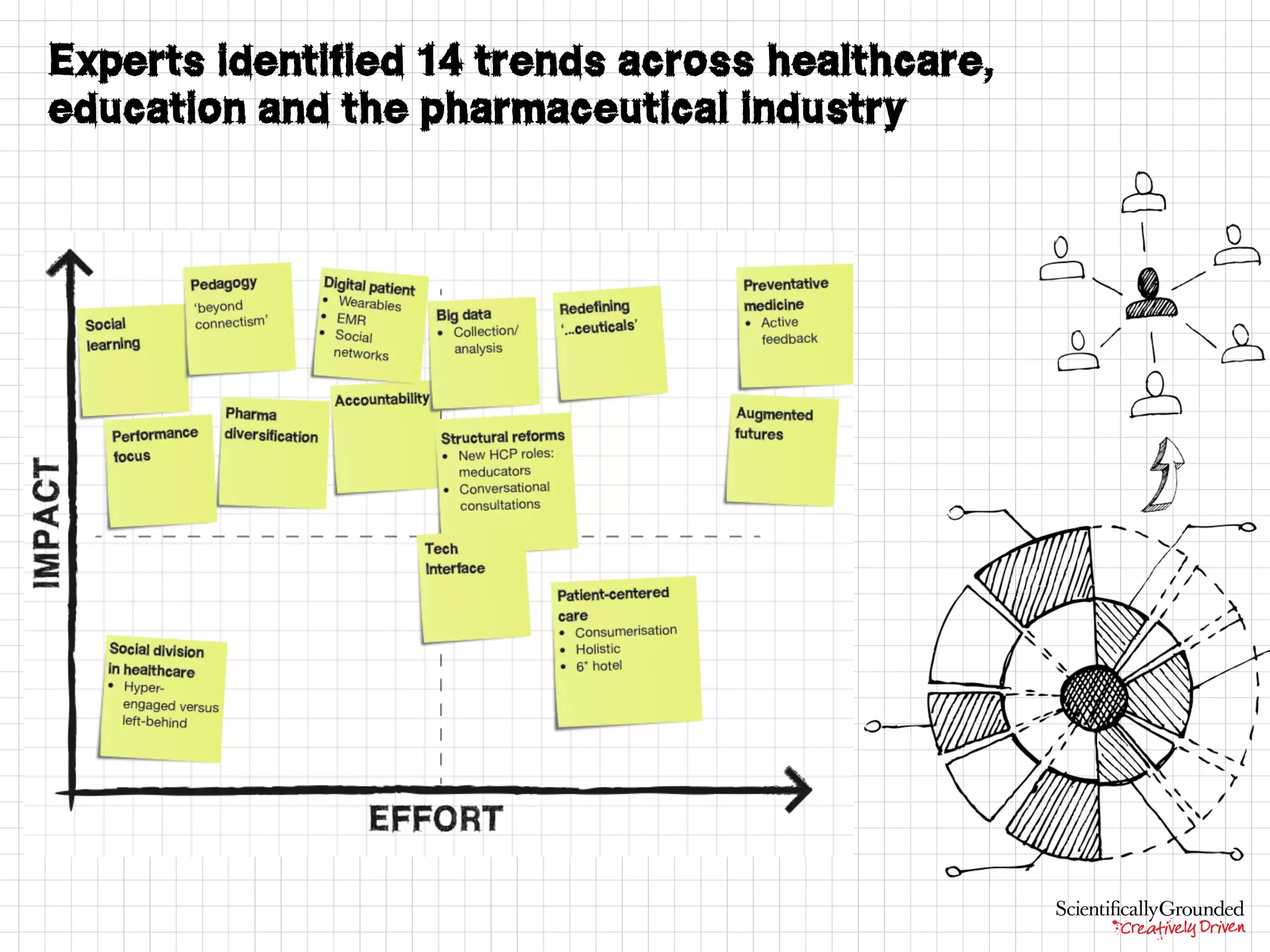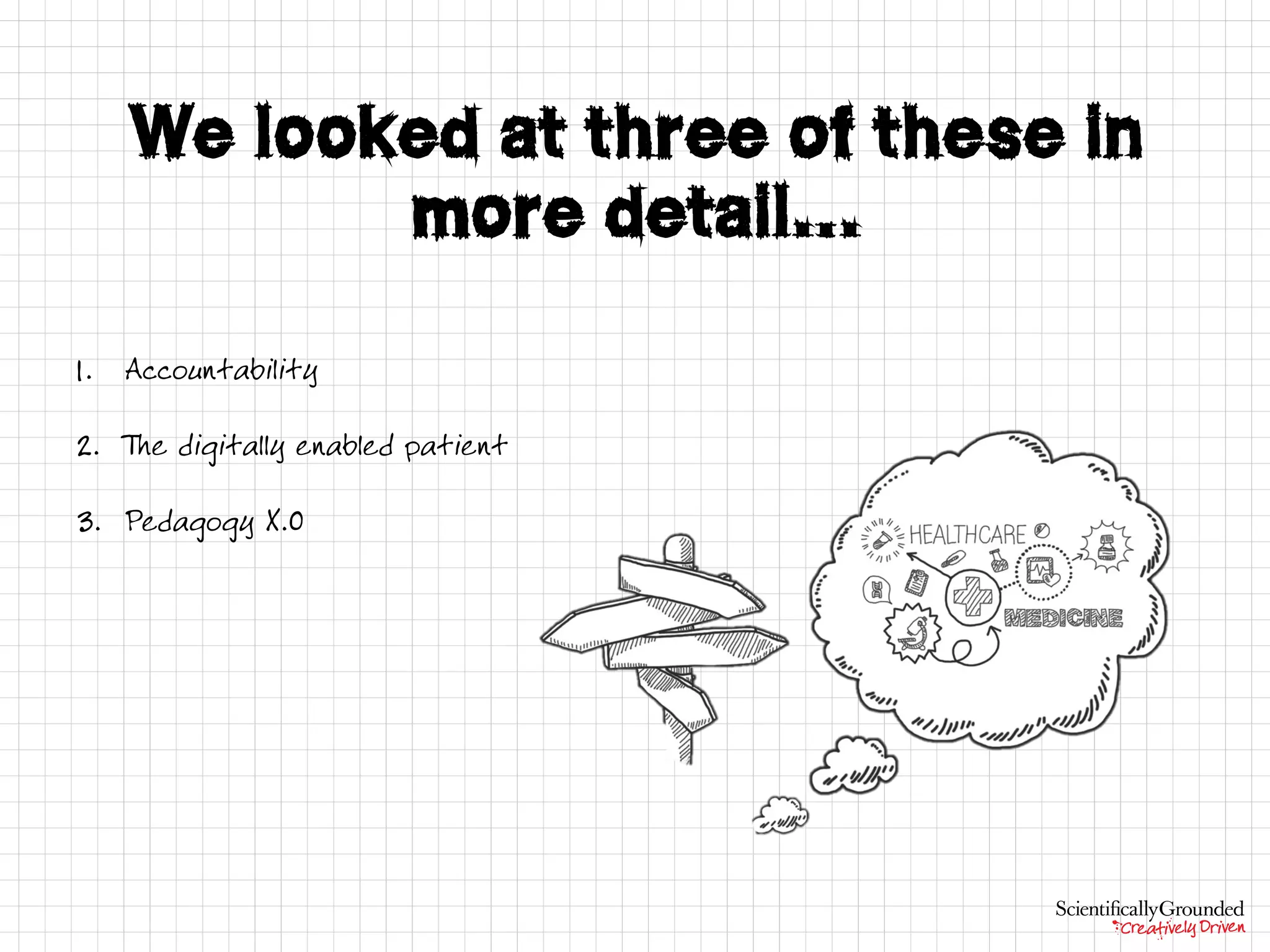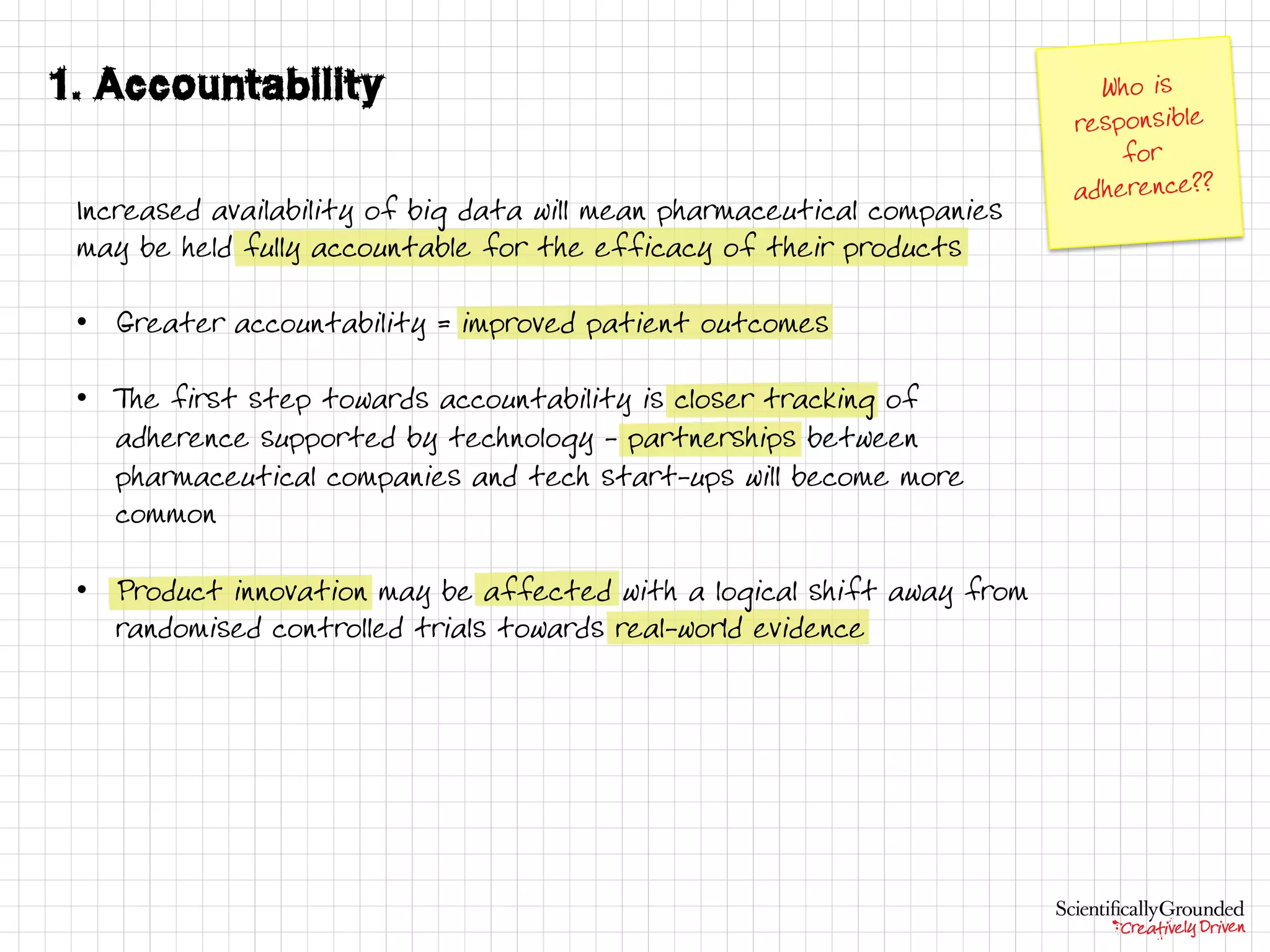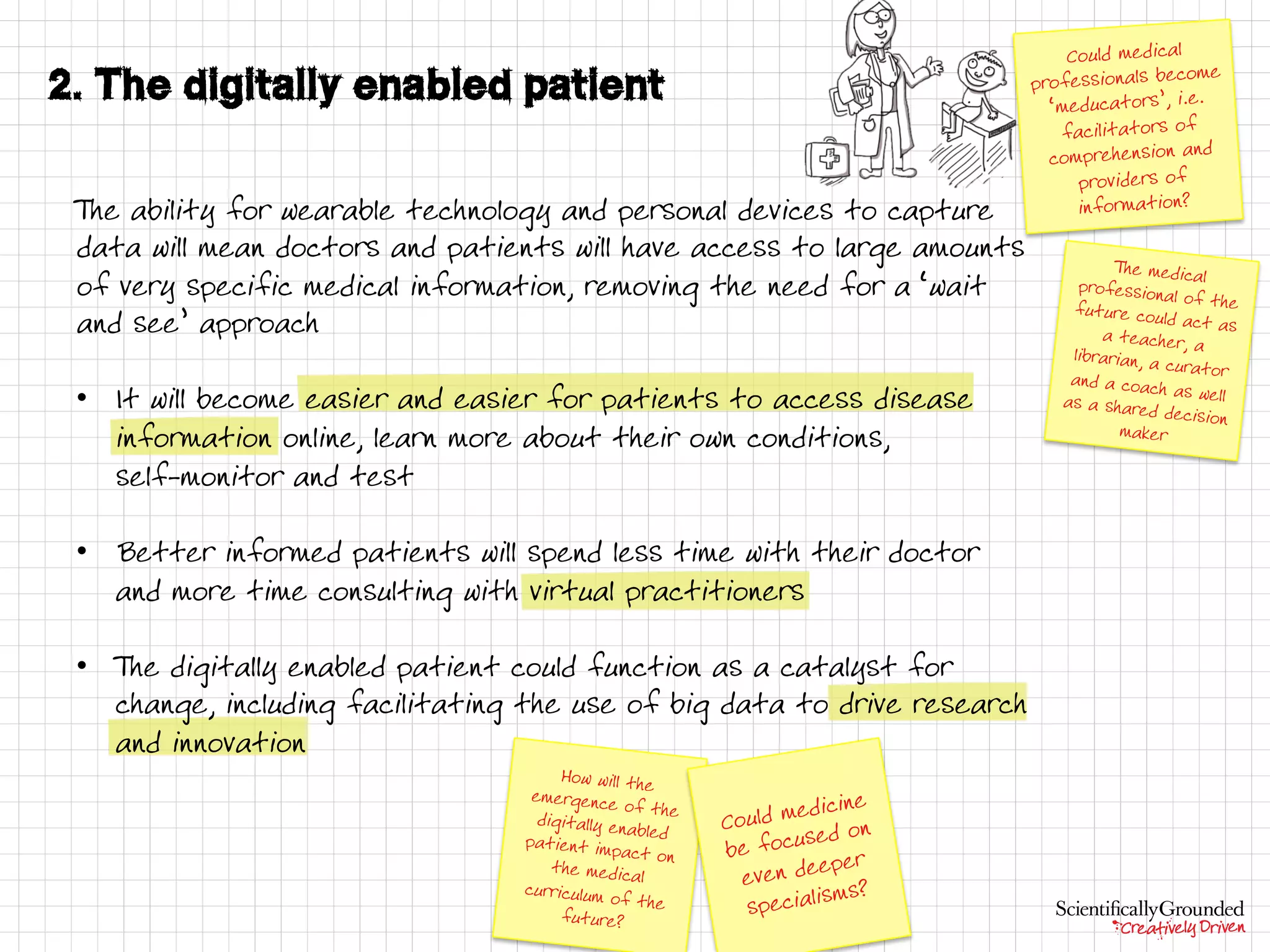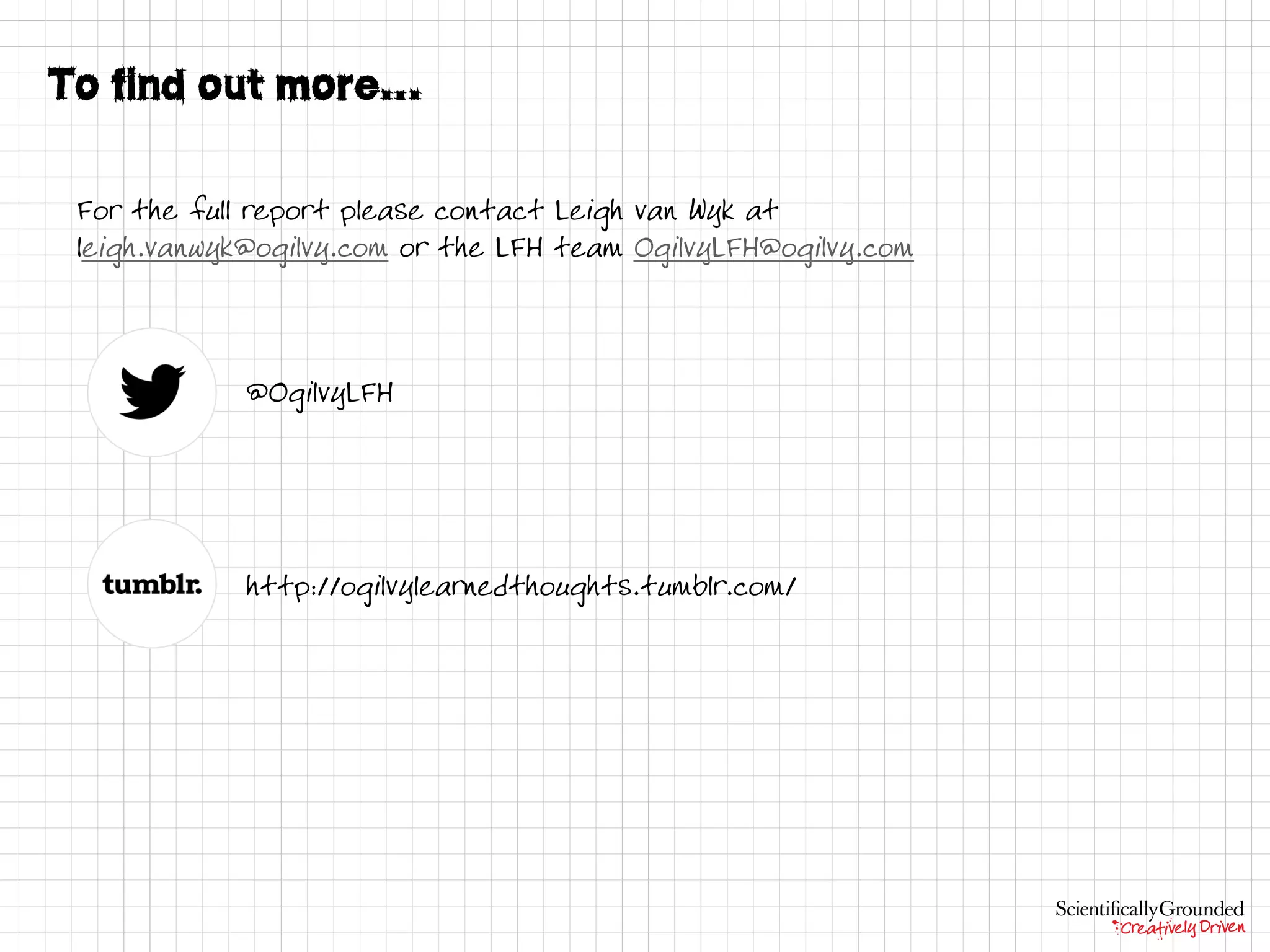The document summarizes key trends that are likely to impact the healthcare industry in the next decade based on a panel discussion with experts. Three major trends are: 1) Increased accountability and use of real-world data by pharmaceutical companies as patients have more medical information. 2) The rise of the "digitally enabled patient" as wearables and devices give patients and doctors more data to self-monitor health. 3) The impact of hyper-connected learners who will increasingly personalize their medical education online.

